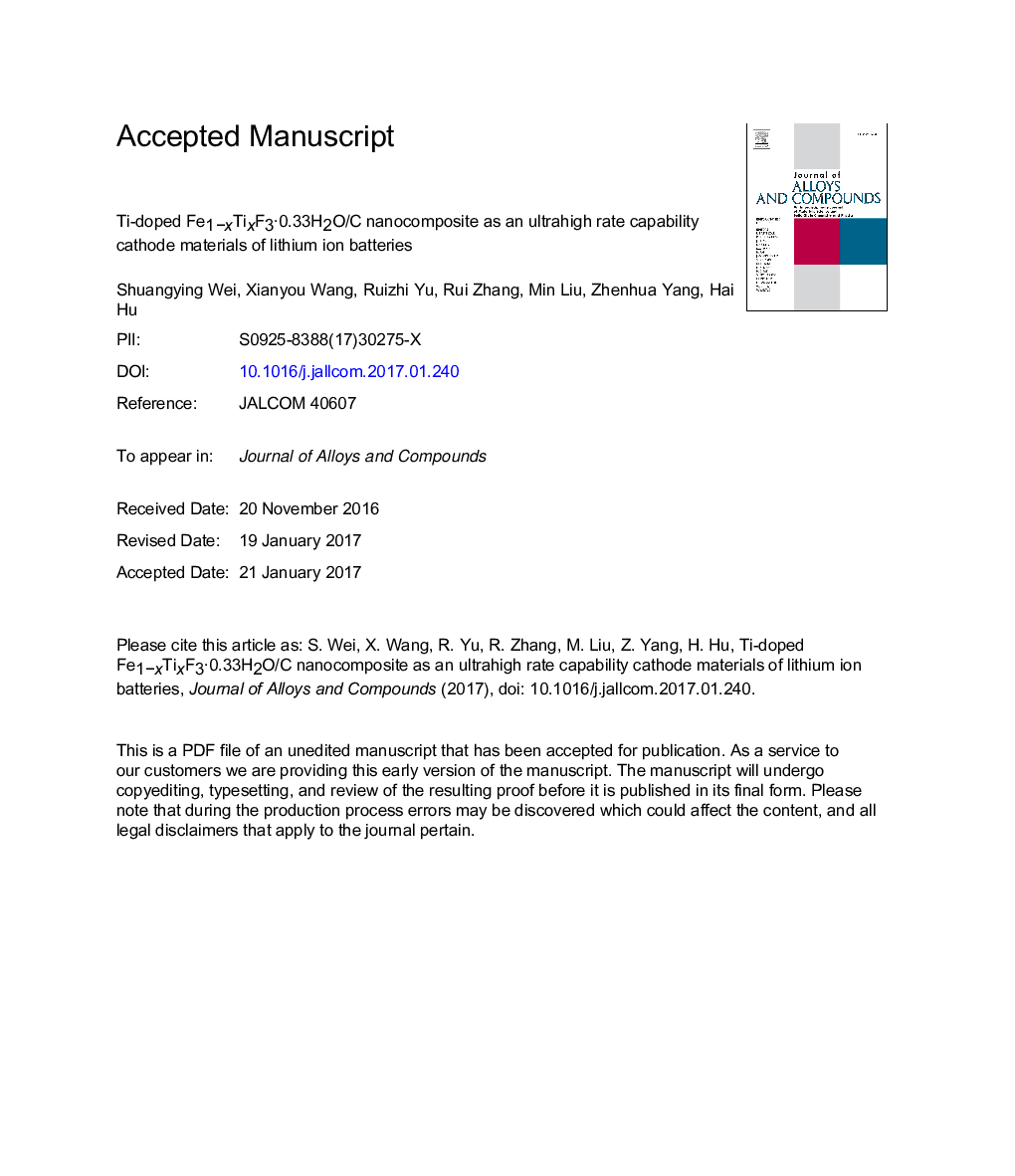| Article ID | Journal | Published Year | Pages | File Type |
|---|---|---|---|---|
| 5459908 | Journal of Alloys and Compounds | 2017 | 28 Pages |
Abstract
The conductivity problem of FeF3·0.33H2O is the main constraint on development and application of this next-generation cathode material for lithium/sodium ion batteries. It has been found in our previous theoretical calculation that Ti-doping can dramatically improve the conductivity FeF3·0.33H2O, and thus improving its electrochemical performance. Herein, Ti-doped Fe1âxTixF3·0.33H2O (x = 0, 0.06, 0.08, 0.10) compounds have been successfully synthesized via a liquid-phase method. Subsequently, a ball milling process with acetylene black (AB) has been used to form Fe1âxTixF3·0.33H2O/C (x = 0, 0.06, 0.08, 0.10) nanocomposite. The chemical composition and elemental distribution of the Ti-doped FeF3·0.33H2O samples were investigated by X-ray diffraction (XRD) and energy-dispersive X-ray spectroscopy (EDXs). The results show that Ti can effectively dope into the samples, and replace partially Fe3+ ions in the FeF3·0.33H2O crystal. Especially the Fe0.92Ti0.08F3·0.33H2O/C nanocomposite achieves an initial capacity of 460.15 mAh gâ1 and retains a discharge capacity of 294.86 mAh gâ1 after 40 cycles in the voltage range of 1.5-4.5 V. Besides, the as-prepared material shows excellent rate capability, it can deliver a discharge capacity of 146.06 mAh gâ1 even at 2 C.
Related Topics
Physical Sciences and Engineering
Materials Science
Metals and Alloys
Authors
Shuangying Wei, Xianyou Wang, Ruizhi Yu, Rui Zhang, Min Liu, Zhenhua Yang, Hai Hu,
